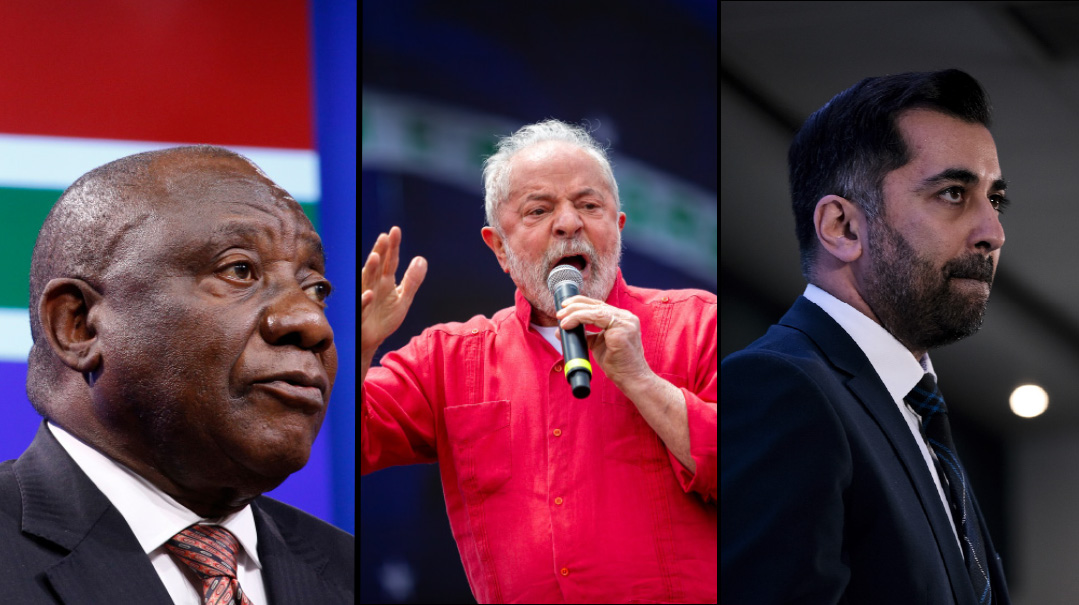When Health Care Gets Sick

Long the sick man of Europe, the NHS’s woes are a cautionary tale for conservatives everywhere

When Health Care Gets Sick
IF
Britain’s National Health Service materialized as a corporeal patient in an emergency room, doctors would label its condition acute. Waiting three to four months to see an NHS cardiologist is routine, many wait almost a year for a hip replacement, and in thousands of cases, treatment for cancer can take weeks to get underway. With hospitals full to bursting, 40 percent of ambulance crews waited more than half an hour to offload patients over the new year peak. Decades of under-investment have resulted in a hospital capacity of 2.4 beds per thousand of the population, compared to an OECD average of five.
Anecdote is never the best guide to reality, but there are too many horror stories of visitors to Israel getting blood tests that are hard to procure back home to tell any other story: Britain’s health service is in crisis.
To outsiders — particularly Americans with a mostly private health system — it’s almost impossible to grasp the NHS’s place in British life. Start with its scale: In a country of 64 million, 1.5 million are employed by the NHS. That makes the NHS the world’s fifth biggest employer, after corporate behemoths like McDonald’s, and the Chinese armed forces.
According to a 2018 poll, a full 87 percent of Britons were proud of the health service — that’s 23 points ahead of the royal family. Cynical Brits don’t get misty-eyed over much, but the free-at-point-of-use NHS is one of those rarities. It was Thatcher-era chancellor Nigel Lawson who put it best, calling the NHS “the closest thing that the English people have to a religion.”
Pre-pandemic, NHS bosses could point to a report by the Commonwealth Fund, a Washington think tank, placing Britain at the top of the list in terms of health care provision. But that report painted an overly flattering picture. When the focus is placed on health care outcomes such as cancer survival rates instead of on health care access, Britain plunges in international rankings.
Not even religious fervor can blind the country’s leaders to the system’s failures now, which is where the political peril starts.
As the governing Conservatives under Prime Minister Rishi Sunak wrestle with treatment backlogs affecting seven million people, Labour leader Sir Keir Starmer has seized the initiative, calling the British conceit that the NHS is the envy of the world “plainly wrong” and the situation for patients “intolerable and dangerous.”
The NHS’s model of public health care is not beyond salvage; introducing elements of competition as Israel’s public health system does, with its four competing health funds, would bring quasi-market discipline to a bloated bureaucracy. Charging patients a small amount for using the service — again, standard Israeli practice, despite its socialized nature — would cut thoughtless use of health care.
But inertia on the NHS is part of the Conservative Party’s DNA. Since the Labour Party’s founding of the NHS in 1948, the Conservatives have spent the ensuing decades atoning for the original sin of their opposition.
In practice, that means out-lefting the left, throwing ever greater sums at the sacred cow of a health service while demanding no market-based reforms in return.
Long the sick man of Europe, the NHS’s woes are a cautionary tale for conservatives everywhere of what happens when the political right falls asleep at the wheel.
Biden’s Wonderland
Curiouser and curiouser, as Alice said. For years, Israeli leaders pleaded with President Obama and then President Biden to ditch the Iran deal because of Tehran’s aggression. The answer, slathered with professions of undying amity, was that a nuclear deal was a necessary evil — one whose necessity Israel itself would come to appreciate.
That line held until the day that Iranian drones appeared over Kyiv. Suddenly, Iran’s role as a belligerent against a US ally took the deal off the table. Miraculously, wider strategic calculations vanished like Iranian nuclear material before an arms inspector’s visit.
Israelis might be forgiven for wondering about Biden’s through-the-looking-glass policy reversal: Surely Iran is already a belligerent against another staunch US ally — Israel itself?
Perish the thought that some US allies are more equal than others. Doubtless there’s a clear distinction between Iranian attacks on Ukraine and Iranian aggression against Israel that Israelis are simply too emotional to grasp.
Tank You
And over to the battlefield. Remember that distant day — some nine months ago — when commentators eulogized the mighty tank as it was humbled by bazooka-wielding Ukrainians? It seems that the armored monsters will live to fight another day, and that the Ukrainians themselves can’t get enough of them.
As Russia threatens another offensive, Britain will supply a handful of Challenger 2 tanks, and Poland wants to supply the Leopard, a German-made tank whose re-export is contingent on Berlin’s say-so.
Moves to supply Western armor are obviously about growing Western determination to defeat Putin, and confidence in Ukraine’s ability to deliver the goods. They’re also a chance to assess in battlefield conditions whether modern tanks are as vulnerable to the West’s own anti-armor missiles as Russia’s decrepit kit.
Heads Up
Another week, another anti-yeshivah article in the New York Times. Except that this one wasn’t about chassidish yeshivos that take state money while failing to teach secular studies, but about Yeshiva University taking state money while failing to allow alternative lifestyle student groups.
The differences between the two cases should be as crystal clear as the distinction between the two communities — chassidish and Modern Orthodox — who attend the different institutions.
That is, until you scroll through many of the comments, where it’s clear that many of the writers conflate the two into one big Orthodox scam.
“This school is like something from the 1950s,” said one commenter. “Greedy for education funds from the government, but determined to be bigots when it suits them,” reads another. “It seems that the entire Orthodox ‘educational’ system is a scam,” opines a third.
For anyone in either community inclined to minimize the scale of the threat faced by the other demographic, these comments should be required reading. They bring home that for the New York Times, and many of its readers, Orthodox education — by virtue of its parochialism — crosses a red line.
This is no longer about fluffy, feel-good achdus, but about recognizing that the progressive push against Orthodox values has different manifestations. The NYT really doesn’t care whether you wear a shtreimel or kippah, and in the pushback against the campaign, neither should we.
(Originally featured in Mishpacha, Issue 945)
Oops! We could not locate your form.







